1 GW is the equivalent of 8.76 TWh in a year. When you say that you installed 1 GW of solar capacity do expect that it will generate 8.76 TWh in a year? On average, how much would 1 GW of solar capacity generate? Would be great to get some sources on that as well.
-
Hello and welcome. There are a lot of factors in this, the most obvious ones being: 1) where is this installed (how sunny a place!), 2) whether it's angled appropriately, 3) whether the panels track. Are you just after wide averages or a specific? – jonathanjo Jul 02 '23 at 22:00
-
I'm mainly after wide averages. – Jonathan Jul 02 '23 at 22:03
-
1I would assume that 1 GW is just a peak power. – Chupacabras Jul 02 '23 at 22:13
-
1What you’re looking for is “sun hours” - and in the United States for example best case is 6 per day (averaged over a year) so your installed capacity performs at 25% of peak - and that’s probably assuming solar tracking as well. – Bryan Jul 02 '23 at 22:31
-
@Jonathan I think Bryan addresses your `wide averages` question. You also need to understand what is meant by `solar capacity`. Panels are rated for their generating ability when located at the equator on a clear day at noon when the insolation reaching sea level is approximately 1000 watts per square meter, over all wavelengths (only some of which are usable.) The panel's efficiency only tells you how big it is. So a 1 kW panel with 10% efficiency is twice the size of a 1 kW panel with 20% efficiency. They are both 1 kW, though, at the equator at noon. – periblepsis Jul 02 '23 at 23:29
-
1 GW is the equivalent of 8.76 TWh in a year if and only if the panels are in unobscured sunshine 24 hours a day. With optimal siting in the real world you are unlikely to get more than 25% of this. – Peter Jennings Jul 03 '23 at 00:00
-
For general outline of how much the various factors affect the generation, have a look at David Mackay, _Without the hot air_, chapter 5, https://www.withouthotair.com/Electronic.html – jonathanjo Jul 03 '23 at 00:03
-
@Jonathan Solar power also includes thermal energy storage and not just PV. So the word 'solar' may be overly-broad for your use. In any case, here are some useful links to read: [*How to Calculate Solar Panel Efficiency*](https://www.photonicuniverse.com/en/resources/articles/full/7.html), [*Comparison of Capacity Value Methods for Photovoltaics in the Western United States*](https://www.nrel.gov/docs/fy12osti/54704.pdf), and [*Solar Energy and Capacity Value*](https://www.nrel.gov/docs/fy13osti/57582.pdf), for starters. Answers made of links are discouraged. So must remain as a comment here. – periblepsis Jul 03 '23 at 00:07
-
So you will need to predict the insolation ie amount of sun you get, ie cloudy days, any shading of the system etc – Solar Mike Jul 03 '23 at 05:30
-
Thanks for the help everyone! – Jonathan Jul 03 '23 at 11:08
-
See the useful https://www.gaisma.com site that provides average daily insolation by month for sites worldwide. Plus much much more. They use NASA data. – Russell McMahon Jul 03 '23 at 13:13
-
Solar panel ratings generally presume aimed dead square on with the sun, and favorable conditions in all respects from clear air to ideal panel temperatures. – Harper - Reinstate Monica Jul 04 '23 at 02:11
1 Answers
Assuming your 1GW is the power rating of the solar array (maximum power that can be safely delivered under specified operating conditions) the total energy over a long term depends on many factors such as:
- latitude of installation
- altitude of installation
- local weather conditions (frequent cloud cover)
- efficiency of the panels
- angle of the panels
- shading due to trees, geography or other structures
- likelyhood of dust/snow/etc contamination on the panels
For the first three points, many companies provide statistical data in map form. The following was taken from:
https://solargis.com/maps-and-gis-data/download/north-america
This allows calculation of the effective output energy for a given location. I was unable to verify, but expect the data will be based on optimal panel orientation and no shading or allowance for dirt, snow etc. There will also be an assumption of panel efficiency in the map.
The site also has maps or average solar irradiation in both horizontal and normal orientations. This data could be used if the panel efficiency or orientation did not match the condition in the above map.
So in summary, the hypothetical 1GW array if located in best location possible in the USA would produce 2TWhr/year. This quite bit down from your 8.76 TWhr (which is based on 365days * 24hrs/day). The most obvious reason is the panels only produce during daylight hours, so that immediately halves the energy potential. But also for large parts of the day the angle of the sun is low so longer path through the atmosphere and also less favourable angle on the panel.
- 685
- 1
- 6
